
Our review score is based on thorough real-world testing and is always held up against comparable models.
How We TestValues marked with '*' are based on our independent testing and may differ from those specified by the manufacturer.

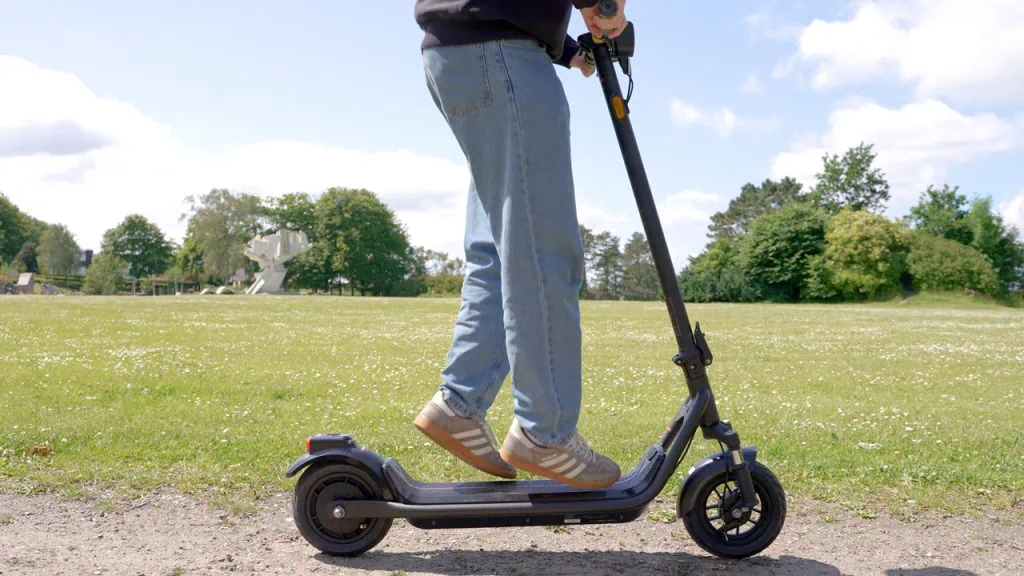
This is where the NIU KQi 100F earns its keep. After testing over 30 budget scooters, I can confidently say this offers the smoothest ride under $500.
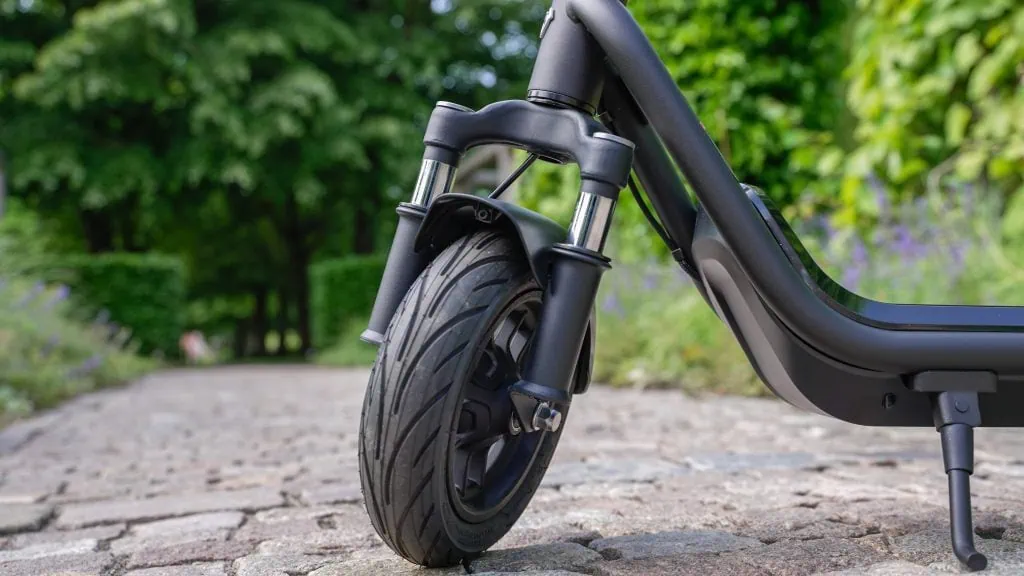
The combination of 9.5" tubed pneumatic tires and front spring suspension makes a huge difference compared to typical budget scooters. Most competitors at this price force you to choose between solid tires or small pneumatics without suspension. The 100F gives you both.
I tested it on various surfaces:
The suspension isn't adjustable, but NIU tuned it well for this weight class. It absorbs real bumps without feeling too soft or bouncy.
The single drum brake paired with regenerative braking delivered a 12.8-foot stopping distance from 15 MPH in my tests. That's adequate for a scooter with a 17.4 MPH top speed and better than most competitors.
| Model | Braking Distance |
|---|---|
| NIU KQi 100F | 12.8 ft (3.9 m) |
| Vmax VX5 Pro GT | 12.2 ft (3.7 m) |
| NIU KQi2 Pro | 14.6 ft (4.5 m) |
| TurboAnt X7 Max | 15.2 ft (4.6 m) |
The drum brake setup didn't require any adjustment out of the box, and I haven't needed to touch it after hundreds of miles. That's the beauty of drum brakes: they're virtually maintenance-free for the life of the scooter. You can adjust the regenerative braking strength through the app.
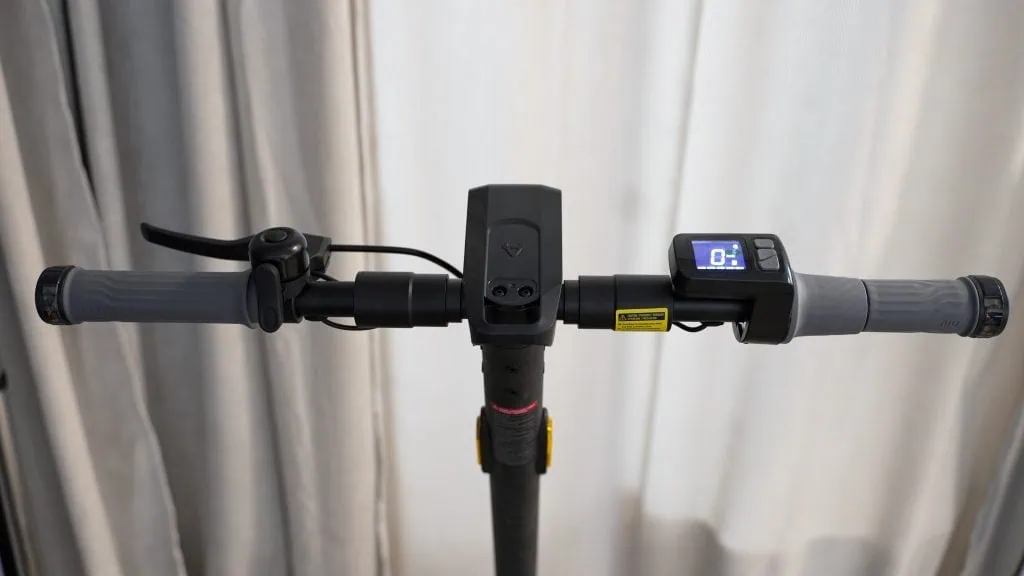
The wide handlebars provide good control and feature comfortable grips. The real standout: these foldable handlebars don't wobble. I've tested many scooters with folding handlebars that develop play over time. The 100F's stay rock-solid.
Turn signals are integrated into the handlebar ends. They blink until you turn them off, which is more useful than the auto-canceling signals on some pricier models. You rarely see turn signals on sub-$500 scooters.
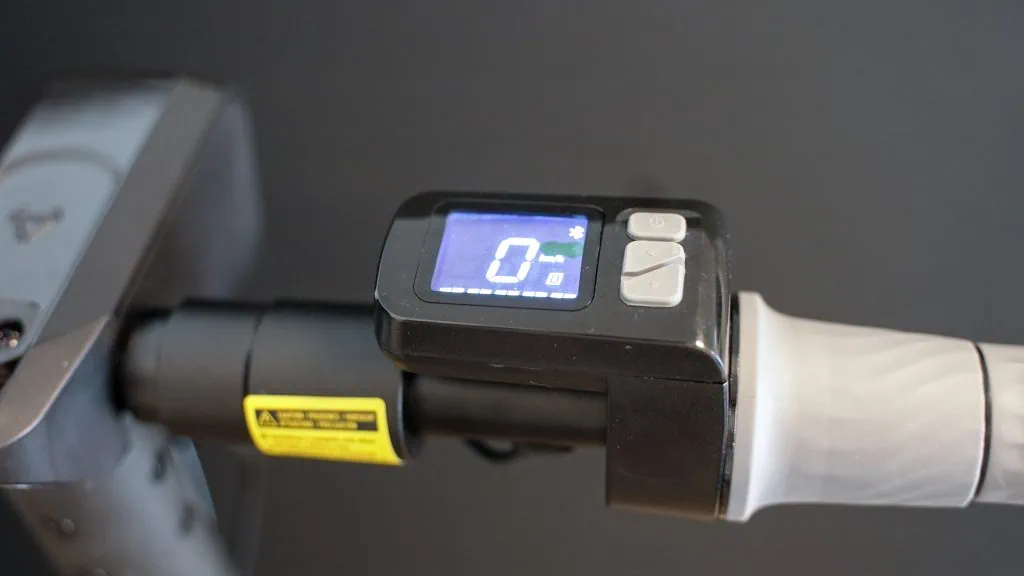
The display works fine in most conditions but struggles in direct sunlight. The deck offers plenty of foot space, and the stem angles slightly toward you for better riding posture.
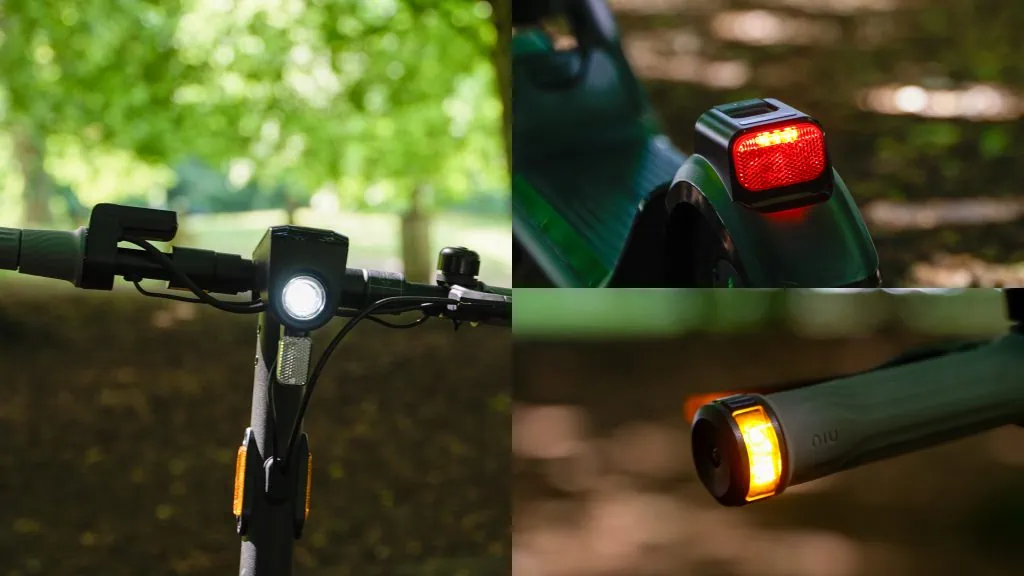
The lighting setup is adequate for the price. You get a decent headlight and taillight, though not as bright as the KQi3 or 300 series. The headlight illuminates the path well enough for typical evening commutes, while the taillight keeps you visible from behind. The real standout remains those turn signals, which significantly boost safety in traffic.
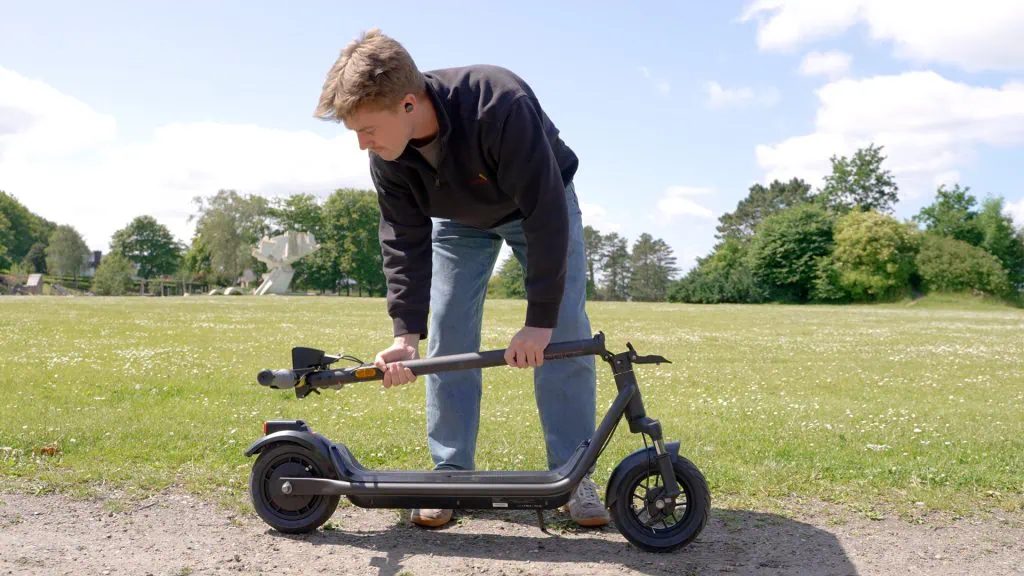
Of course, comfort features add weight, but the 100F handles this intelligently. At 38.8 lbs, it isn't the lightest scooter out there, but the foldable handlebars make it one of the most practical for daily use.
| Model | Weight (lbs) | Weight (kg) |
|---|---|---|
| NIU KQi 100F | 38.8 lbs | 17.6 kg |
| Vmax VX5 Pro GT | 36.8 lbs | 16.7 kg |
| NIU KQi2 Pro | 40.6 lbs | 18.4 kg |
| TurboAnt X7 Max | 34.2 lbs | 15.5 kg |
While it's a few pounds heavier than some competitors, those extra pounds buy you:
The weight distribution is well-balanced. At 175 lbs myself, I find it manageable for stairs and short carries.
NIU continues to make the best folding mechanisms in this price range. It's smooth, uses a safety pin to prevent accidental opening, and hooks securely to the rear fender. After 200 folding cycles in testing, there's no loosening or wear.
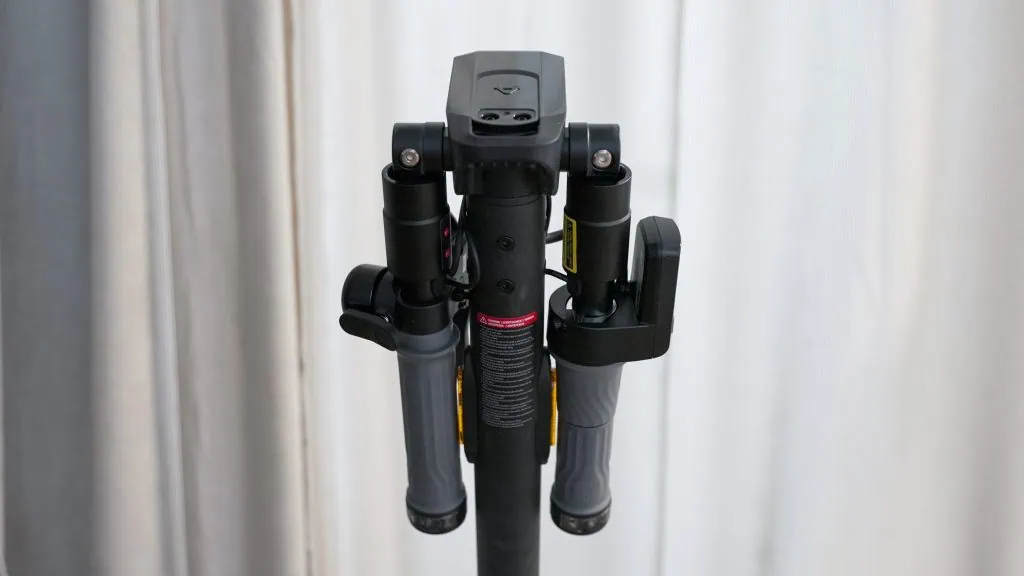
The foldable handlebars are what really set it apart. When folded, the scooter becomes genuinely compact. It's much easier to store under a desk, fit in a car trunk, or integrate with public transport.

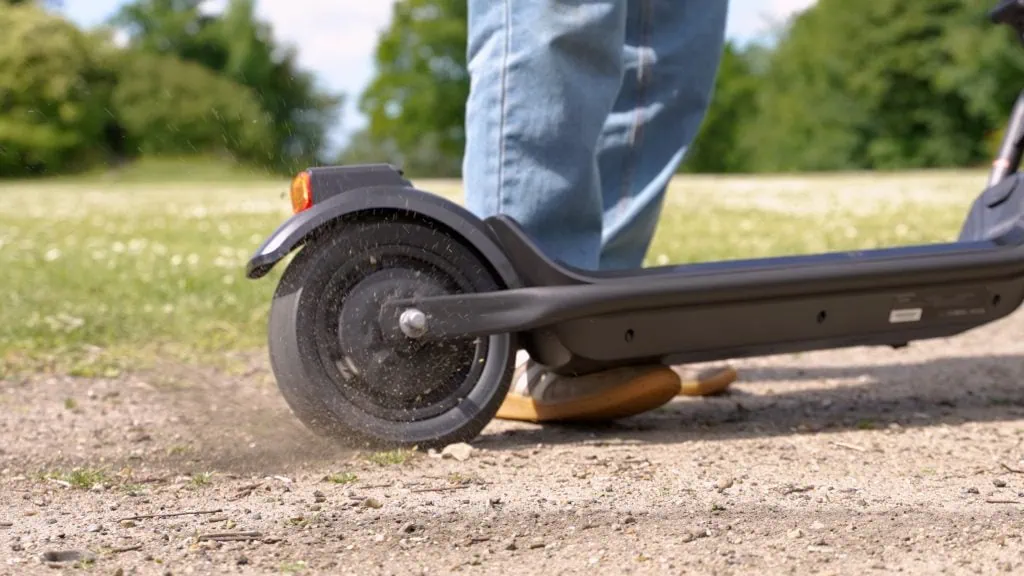
The NIU KQi 100F delivers adequate performance for urban commuting, though it's clearly not built for speed or hills. For context, most entry-level scooters hit 15-20 MPH, so the 100F's specs are typical, but the ride quality isn't.
The 300W rear motor (600W peak) runs on a 48V system. In my tests at 175 lbs:
| Model | Top Speed | 0-15 MPH |
|---|---|---|
| NIU KQi 100F | 17.4 MPH | 7.2 s |
| Vmax VX5 Pro | 17.5 MPH | 6.89 s |
| NIU KQi2 Pro | 17.3 MPH | 8.83 s |
| TurboAnt X7 Max | 19.55 MPH | 8.29 s |
The 48V system maintains performance better than 36V competitors. I was still hitting 17 MPH with just 5% battery remaining, while cheaper scooters slow significantly as the battery depletes.
This is the 100F's weak point. On my standard 8% grade test hill:
It couldn't climb my steepest 17% test hill at all. For riders under 200 lbs in relatively flat areas with occasional mild hills, it's fine. Anyone dealing with steep inclines should consider the NIU 300X instead.
The 243Wh battery (48V, 5.06Ah) delivered these results in my testing:
| Test (#) | Range | Avg. Speed |
|---|---|---|
| #1: Speed Priority | 9.98 miles 16.1 km | 13.87 MPH 22.3 KMH |
| #2: Regular | 11.38 miles 18.3 km | 12.2 MPH 19.6 KMH |
| #3: Range Priority | 13.87 miles 22.3 km | 9.7 MPH 15.6 KMH |
That 11.38-mile regular test result is modest compared to competitors. The Vmax VX5 Pro GT manages over 15 miles, while the KQi2 Pro nearly doubles the 100F's range at 19.8 miles. For a typical 5-mile commute, that means charging every 2-3 days.
The trade-off is clear: you get suspension and better ride quality but sacrifice range. For commutes under 10 miles round trip, it works. Anything longer and you'll need to charge at work or look elsewhere.
Charging takes about 4.5 hours from empty. The app includes a charge limiter (80% or 90%) to extend battery lifespan. A nice feature at this price point.
NIU's reputation for reliability holds true with the 100F. After extensive testing, nothing has loosened or broken.
I stress-tested the folding mechanism (200 cycles) and kickstand (500 cycles) with no issues. Typical NIU quality.
With an IPX5 rating, the 100F handles wet conditions confidently. I've ridden it through multiple rainstorms without any issues. The larger 9.5" tires disperse water better than smaller wheels, maintaining good grip on wet surfaces. Just avoid deep puddles and dry it off after wet rides to prevent long-term corrosion.
The NIU app has been stable throughout testing. You get:
The motor features all the essentials, including push-to-start and customizable settings. While there's no zero-start option, you can adjust the push-off speed down to 3 km/h through the app, so it picks up very responsively. The battery charge limiter is particularly useful - capping charging at 80% for daily commutes can significantly extend your battery's lifespan over years of use.
NIU offers a 2-year warranty, which is excellent for this price range. The downside: NIU operates as a closed system, so you can't easily source parts for DIY repairs beyond basics like tubes. Most riders won't mind, but it's worth knowing if you prefer to maintain your own scooter.
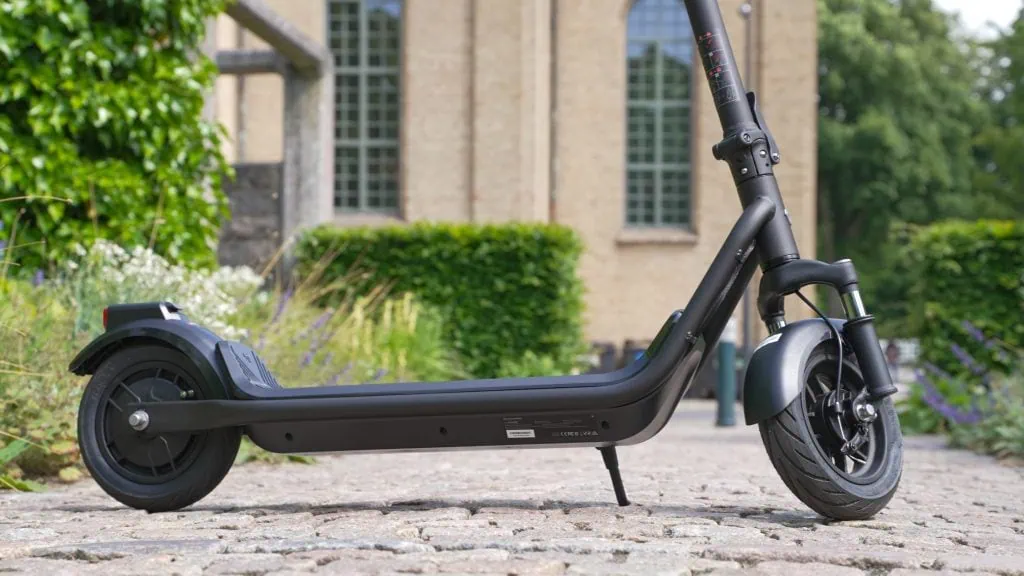
The NIU KQi 100F succeeds by prioritizing what matters most for daily commuting: ride comfort and practical portability. At this price point, you usually have to choose between features, but the 100F manages to deliver the best riding experience in its class.
You won't find a more comfortable ride under $500. Yes, some competitors go farther or slightly faster, but they can't match the 100F's combination of suspension, larger tires, and build quality. For urban commuters whose daily needs fit within its capabilities, the NIU KQi 100F is the clear choice.
The modest range and hill climbing are real limitations, but if your commute is relatively short and flat, you'll appreciate the smooth ride and thoughtful features every single day. The NIU KQi 100F proves that you don't have to compromise comfort on a budget.
